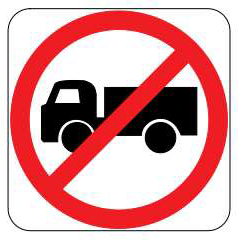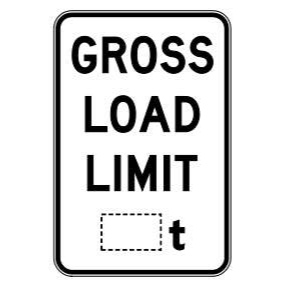Heavy vehicle and freight management
Managing freight and heavy vehicles is an important responsibility for local government. An efficient supply chain is vital for local businesses and primary producers.
Councils must ensure that roads, bridges and other infrastructure are fit to safely carry the loads of heavy vehicles without causing undue damage. Noise, vibration and air pollution can be important factors for communities, particularly in sensitive settings, times or locations. All of us rely on efficient freight for our daily goods and services.
This page is a centralised resource and information hub to assist council officers access information and advice about managing freight and heavy vehicles. It will be updated regularly and we welcome feedback on priorities for content and suggestions for improvement.
On this page:
- Background and context
- Webinars
- Authorising environment
- Policy settings
- Heavy Vehicle Permits
- Construction trucks and community safety
- Gazettals and heavy vehicle maps and information
- Key contacts
- Frequently Asked Questions
Background and context
In July 2020 a MAV survey of Victorian councils (PDF - 198KB) identified the top issues for Victorian councils as being:
- Supporting local industry including primary producers
- Heavy vehicle impacts on roads and bridges
- Available funding to maintain and upgrade important freight connections.
Webinars
The MAV hosts regular webinars on freight and heavy vehicle management, our recent webinars include:
Managing Freight and Heavy Vehicle Access for Local Government
- Managing Freight and Heavy Vehicle Access for Local Government - Councillor Seminar - 8 Jun 2023 (Vimeo)
- Managing Freight and Heavy Vehicle Access for Local Government - Councillor Seminar - Jun 2023 (PDF - 1.66MB)
Construction Truck and Community Safety
- Construction Truck and Community Safety - 5 Apr 2023 (Vimeo)
- Construction Truck and Community Safety Webinar - Presentation - Apr 2023 (PDF - 2.0MB)
- DTP Construction Trucks and Community Safety Project - Fact Sheet - Information Update - May 2023 (PDF - 845KB)
Urban Freight Consolidation Centre
Freight and heavy vehicle management for councils
- Freight and Heavy Vehicle Management - 27 Apr 2022 (Vimeo)
- MAV Freight and Heavy Vehicle webinar - 27 Apr 2022 (PDF - 2.8MB)
Authorising environment
Council local laws can be enacted to assist management of the impacts of freight and heavy vehicles, and there is a range of State and Federal legislation and regulation that must be considered as part of the authorising environment.
At National level, the National Transport Commission leads national land transport reform. The Heavy Vehicle National Law regulates the use of heavy vehicles with a gross vehicle mass of more than 4.5 tonnes.
In Victoria, the Transport Integration Act sets out the overarching objectives and framework for managing the transport system. The Road Management Act and its associated regulations establishes a coordinated management system for public roads, both state and local.
- Integration Act legislation
- Integration Act overview
- Management Act legislation
- Management Act implications
For councils, some aspect of the Local Government Act are relevant to how councils can make decisions, consult with the public and have power over roads.
Policy settings
Links to key State and Federal policies regarding freight can be accessed via the following links:
- State transport policy
- State Freight policy
- Federal transport policy
- Federal Freight and supply chain strategy
Heavy Vehicle Permits
A key role of the National Heavy Vehicle Regulator (NHVR) is to provide the framework and support for road managers to administer the system of heavy vehicle permits. They support this role with a range of development and training materials for local government road managers, conduct regular forums and can provide relevant data to assist councils. There are also liaison staff who can specifically assist council staff, you are encouraged to make contact and ask questions if you need support in this area.
Operators of over-size or over-mass vehicles also require third-party approvals prior to travel. Further information is available on the Third Party approvals webpage.
The NHVR also have a range of resources for local-government-road-managers.
Construction trucks and community safety
In partnership with state government departments, non-government organisations and industry, the Construction Truck and Community Safety Project provides new tools and ways of working to improve safety for pedestrians, bicycle riders and motorcyclists.
It provides model contract clauses for councils to include in their relevant contracts to specify trucks that have additional safety measures to increase community safety.
Gazettals and heavy vehicle maps and information
Another way that heavy vehicle access can be efficiently managed is through a gazettal process. This allows designated vehicles to use particular sections of road without requiring a permit. This information can be mapped to state and national databases so that heavy vehicle operators have access to information for route planning. Further information, advice and support to implement gazettals is available at National Network Maps at Transport Victoria.
Key contacts
- The National Heavy Vehicle Regulator can be contacted by phone at 13 NHVR (13 64 87) or by email at infor@nhvr.org.au.
- The NHVR contact is Sally Clearihan and her direct email is sally.clearihan@nhvr.gov.au.
- You can also subscribe and review the NHVR Local Government Update.
- The Victorian Department of Transport and Planning can be contacted on 03 9655 6666 with Freight Victoria contactable by email at freightvictoria@transport.vic.gov.au.
- The Manager Land Freight Systems at Freight Victoria (part of the Department of Transport ) is Ian Mond and his email is Ian.Mond@transport.vic.gov.au.
- At the MAV, we can be contacted on 03 9667 5555 or by email at transport@mav.asn.au.
Frequently Asked Questions
What’s the difference between a "No Trucks" sign and a "Gross Load Limit" sign?
| No Trucks A No trucks sign, (Road Rule 104), prohibits the use of a roadway by any motor vehicle over a certain size or weight, however there are exceptions for vehicles with a local destination, buses and other limited circumstances. Can include restrictions by length, weight, time of day or week. |  |
Gross Load Limit Gross Load Limit signs, (Road Rule 103), are used to protect road infrastructure such as bridges and pavements from heavy vehicles, without exception. Always operational. |  |
Please send us your questions so we can share the answers.
Improving first and last kilometre access
In late 2021, MAV and the Department of Transport undertook a series of three webinars to explore and identify options to improve first and last kilometre access. The following two documents describe and present the outcomes from that engagement.
